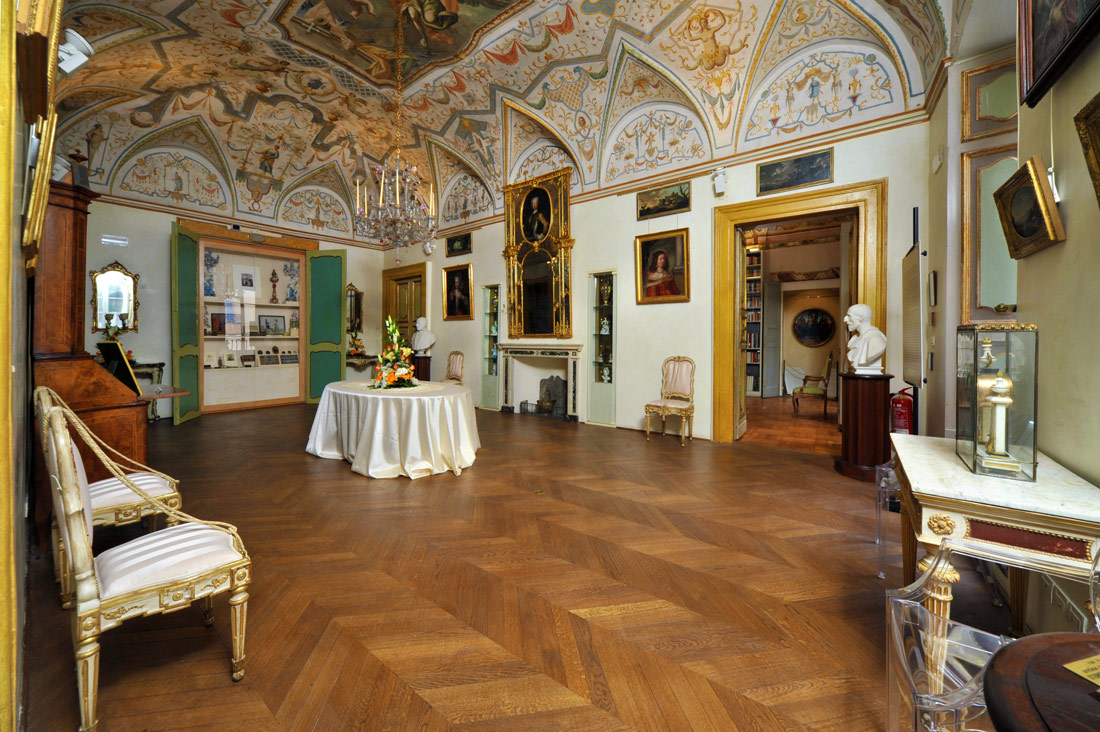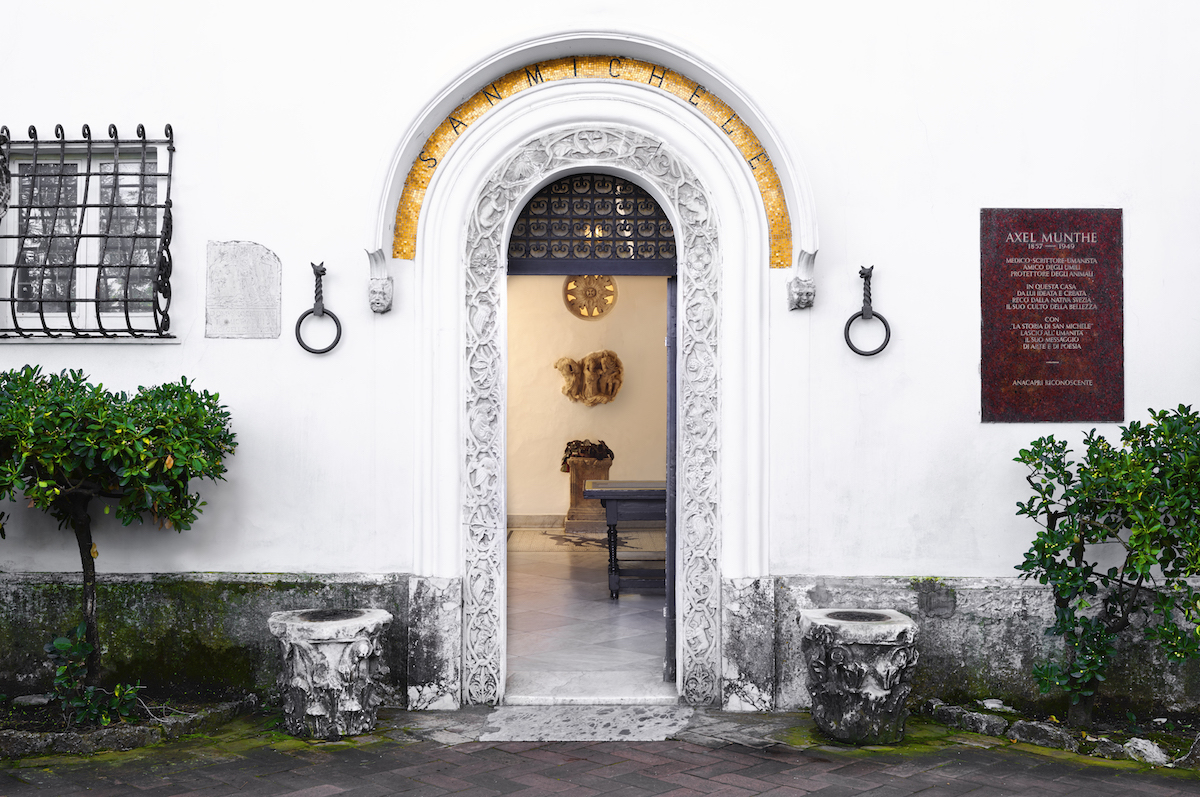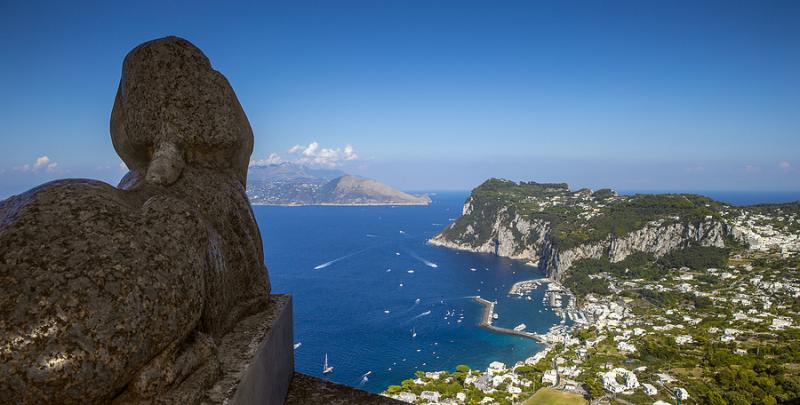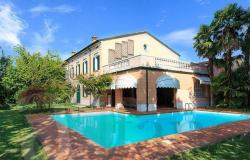As the name implies, a ‘house museum’ is a house transformed into a museum. The house or building in question may have been the home of notable people, a noble residence, a collector’s home, a center of power, the home of ordinary people that illustrates what life was like for a certain community, for example farmers, or it can be residences turned into museums for the artistic and architectural value they hold.
House museums are interesting because they allow the visitor to better understand and to immerse themselves into the life, traditions and values of those who lived there and of the society of the time as a whole. Thus, every piece of furniture, paintings, books, objects, everything is part of the exhibition.
Italy has many house museums from north to south, including some that belonged to famous foreigners who spent extended periods of time in Italy, after falling in love with il bel Paese.
Let’s take a look at five of Italy’s most interesting house museums.
Vittoriale degli Italiani, Gardone Riviera, Garda Lake

The Vittoriale degli Italiani is a monumental complex that includes buildings, streets, squares, an open-air theater, gardens and waterways built between 1921 and 1938 in Gardone Riviera, on the Brescia side of Lake Garda.
The Italian poet and novelist Gabriele d’Annunzio, who is buried in the Vittoriale, commissioned the project to the architect Giancarlo Maroni so that the place would represent the memory of his “inimitable life” (modesty was not part of his personality) as a poet and a soldier, and of the exploits of Italian soldiers during the First World War.
Many people refer to Vittoriale as solely the house of d'Annunzio, but that part of the complex is actually called Prioria. In its rooms, there are about 10,000 objects and 33,000 books, combined with enigmatic phrases and mottos placed on architraves and fireplaces that have symbolic references.
The Vittoriale attracts today an average of 210,000 people a year.
There are three different itineraries you can choose from inside the Vittoriale complex. For more information, visit the dedicated website.
Museo Casa di Dante, Florence

The ‘Casa di Dante’ is a historical museum in one of the oldest areas of Florence, spread over three floors, which illustrates the life and work of the Sommo Poeta through documents and finds.
The current museum incorporates a few medieval houses, including the Torre dei Giuochi, a tower house that belonged to the Giuochi family, neighbors of the Alighieri family. The original Alighieri house is generally referred to as a destroyed building that stood in Piazza San Martino, next to the Torre della Castagna, one of the ancient towers of Florence.
The nearby church of Santa Margherita de’ Cerchi is the place where the poet is said to have met Beatrice Portinari for the first time.
The Casa di Dante museum intends to offer a window into Dante’s multi-faceted personality, as a man, a writer, a politician, a fighter, as well as into the relationship with his hometown of Florence.
New technologies have recently been added which include immersive rooms, video mapping and virtual reality. Guided visits are also available. And if you cannot visit in person, you can take a virtual tour.
For opening hours, visit the Casa Museo di Dante website.
Casa Palazzo Sorbello, Perugia

In the historic center of Perugia, near the Cathedral of San Lorenzo and the Etruscan well, the 17th-century Palazzo Sorbello houses a precious collection of paintings, porcelain, printed works, manuscripts and embroidered fabrics.
Palazzo Sorbello was the noble residence of the Bourbon Marquises of Sorbello, who, like other families of early medieval origin, operated as diplomats and soldiers in different Italian courts.
They bought land, built numerous estates and became wealthy.
The structure consists of three floors; the ground floor and the noble floor still retain the frescoed vaults. The entrance hall shows a rare example of external paving in wooden cobblestones, which was chosen to lessen the noise from the wheels of the carriages entering and exiting.
The rooms on the main floor are furnished with the original family furniture and silverware, 18-century chandeliers, and offer picturesque views over Perugia and the Assisi valley.
For more information and opening hours, visit the Casa Museo di Palazzo Sorbello website.
Casa Museo Giorgio de Chirico, Rome
“They say Rome is the center of the world and Piazza di Spagna is the center of Rome, so, my wife and I, we would live in the center of the center of the world…” Giorgio de Chirico, Memorie della mia vita, 1945
Giorgio de Chirico's house is located in Rome at number 31 of Piazza di Spagna. The artist settled there in 1948 at the age of sixty after living abroad in various European cities and a significant stay in New York (1936-1938).
For the last thirty years of his life, de Chirico lived and worked in the three-story studio apartment, consisting of the living area, the artist’s workshop and a large terrace on the top of the three floors, part of the 17th-century Palazzetto dei Borgognoni.
Located in a strategic position, in the heart of what was considered the cultural and artistic center of Rome since the 17th century - with workshops in Via Margutta and Via del Babuino, art galleries, the historic Caffè Greco in Via Condotti, the fascinating surroundings of Trinità dei Monti and Villa Medici - the house was for the mature artist the ideal place to settle down and continue finding inspiration.
The apartment contains several works belonging to the Giorgio e Isa De Chirico Foundation.
The visit is only possible by advance reservation. Visit the website for more information.
Villa San Michele, Anacapri

“My house must be open to the sun, to the wind, and the voice of the sea, just like a Greek temple, and light, light, light everywhere!” Axel Munthe
The dream home of Swedish doctor Axel Munthe, Villa San Michele was built at the end of the 19th century on the ruins of an ancient chapel dedicated to San Michele.
The villa is located on the island of Capri, between the towns of Capri and Anacapri. It stands at the top of the Phoenician Steps, at 327 meters above sea level. The villa's gardens have panoramic views of the towns of Capri and its harbor, the Sorrentine Peninsula, and Mount Vesuvius.
Munthe was only 19 when he arrived in Capri for the first time, and was immediately enraptured by it. In “The Story of San Michele,” he recounts walking up the 777 Phoenician Steps to reach Capodimonte (the top of the mountain), where it was immediately clear to him that it was the place where he wanted to build his home.
Villa San Michele houses an important art collection, featuring mainly objects of Roman, Etruscan and Egyptian origin that Munthe chose for their beauty and symbolism, including a 3200-year-old sphinx.
The gardens adorned with relics and works of art dating from ancient Egypt and other periods of classical antiquity. They are part of the ‘Grandi Giardini Italiani’ circuit.
For opening hours, visit the Villa San Michele website.





